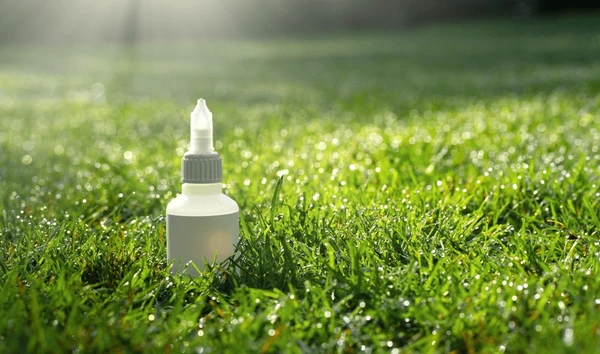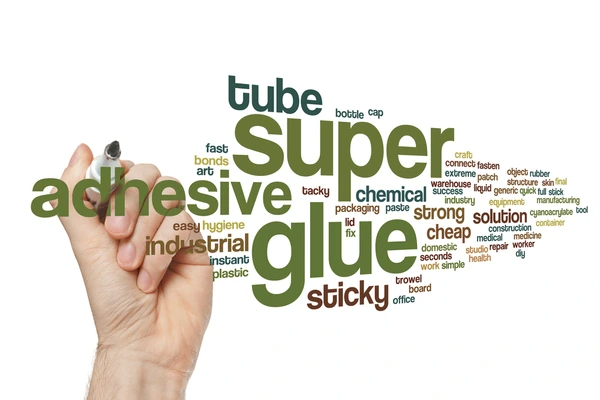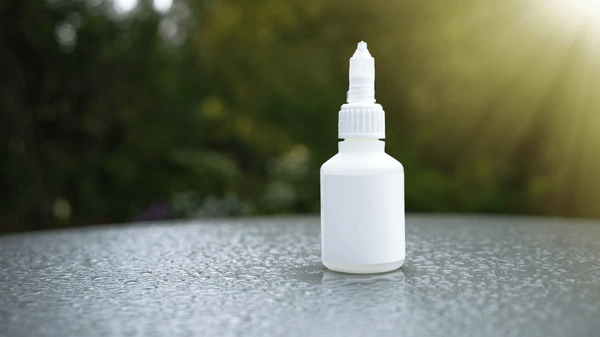
What Is Cyanoacrylate?
Cyanoacrylates (CAs) are a family of fast-acting, resistant adhesives based on esters of 2-cyanoacrylic acid. The monomer structure is CH2=C(CN)-COOR, where R is typically an alkyl group like methyl, ethyl, butyl, or 2-octyl.

Structure and Properties of Cyanoacrylate
Cyanoacrylate compounds have a general structure represented by the formula R-C(=O)-O-CH=C(CN), where R can be a linear, branched, or cyclic alkyl group with 1-20 carbon atoms, or a group of the form -R2-O-R3 or -R4-COO-R5, where R2, R3, R4, and R5 are alkyl groups.
Development of Cyanoacrylate
Origins and Key Milestones
Cyanoacrylate adhesives, also known as “super glues,” were first discovered serendipitously by Dr. Harry Coover and Fred Joyner at Eastman Kodak Laboratories in 1951. Coover and Joyner initially observed cyanoacrylate monomers’ adhesive properties when they discovered their remarkable bonding ability with various materials.This discovery paved the way for the development of cyanoacrylate adhesives as a new class of instant adhesives.
One of the key milestones in the early development of cyanoacrylate adhesives was the synthesis of methyl cyanoacrylate by Eastman Kodak in 1958. This was followed by the introduction of ethyl cyanoacrylate, which became the first commercially available cyanoacrylate adhesive under the trade name “Eastman 910” in 1959.
Advancements and Modifications
Over the years, significant efforts have been made to improve the performance and broaden the applications of cyanoacrylate adhesives. One notable advancement was the development of rubber-toughened cyanoacrylate compositions by O’Connor in 1983, which involved the addition of elastomeric polymers to enhance the toughness and flexibility of the cured adhesive.
Another key development was the introduction of cyanoacrylate adhesives with improved heat resistance. This was achieved through various approaches, such as incorporating aromatic compounds, anhydrides , or copolymers like polybutylmethacrylate-polymethylmethacrylate into the cyanoacrylate formulations.
Modifications aim to improve cyanoacrylate adhesives’ viscosity and gap-filling capabilities. Adding fillers like fumed silica or using acrylate-cyanoacrylate monomers enhances these properties effectively.
Applications of Cyanoacrylate

Rapid Curing and Bonding Mechanism
Versatile Adhesion to Different Substrates
Cyanoacrylates can adhere to a wide range of substrates including metals, plastics, rubbers, wood, and ceramics. However, their adhesion to non-polar and low surface energy substrates like polyolefins can be challenging, often requiring surface pretreatment or additives. Recent developments have improved their adhesion to synthetic elastomers like SEBS, EPDM, and chloroprene rubber.
Improved Thermal and Chemical Resistance
While traditional cyanoacrylates had limitations in thermal resistance and chemical resistance, recent advancements have addressed these issues. The addition of polyfunctional (meth)acrylates, peroxides, and metallocene compounds can enhance the wet heat resistance and chemical resistance of cyanoacrylate adhesives, enabling their use in harsher environments.
Biomedical and Surgical Applications
Cyanoacrylates have found applications in the biomedical field as surgical adhesives for topical wound closure, tissue glues, and endoscopic procedures. Efforts have been made to develop absorbable and biocompatible cyanoacrylate formulations for medical use.
Emerging Applications
Recent research has explored the use of cyanoacrylates as photopolymers and in photo-optical applications like photopolymerizable adhesives, photoresist coatings, optical waveguide sensors, and holographic recording media. Structuring cyanoacrylates into nanofibers using different techniques has also opened up new application areas.
Application Cases
| Product/Project | Technical Outcomes | Application Scenarios |
|---|---|---|
| Dermabond Topical Skin Adhesive | Provides strong, flexible bonding for topical wound closure, reducing healing time and scarring compared to traditional sutures or staples. Antimicrobial properties help prevent infection. | Wound closure in emergency rooms, hospitals, and ambulatory surgery centres for lacerations, surgical incisions, and other trauma. |
| Loctite Instant Adhesives | Rapid cure speed of 5-60 seconds enables efficient assembly processes. High shear and peel strength bonds provide durable, long-lasting adhesion on various substrates like metals, plastics, and elastomers. | Industrial assembly operations requiring fast fixture times, such as automotive, electronics, and consumer goods manufacturing. |
| Permabond Structural Adhesives | High-strength structural bonding with excellent resistance to chemicals, moisture, and temperatures up to 200°C. Enables lightweight, stress-bearing joints in load-bearing applications. | Structural bonding in automotive, aerospace, and construction industries for assembling components subjected to harsh environments and high loads. |
| Loctite Light Cure Adhesives | Precise, on-demand curing with UV or visible light enables accurate positioning and alignment before bonding. Suitable for bonding clear or transparent substrates without affecting optical properties. | Bonding of optical components, medical devices, electronics, and precision assemblies where positional accuracy and aesthetic appearance are critical. |
| 3M Scotch-Weld Cyanoacrylate Adhesives | Formulated with rubber tougheners for improved impact resistance and flexibility. Suitable for bonding dissimilar substrates with different coefficients of thermal expansion. | Bonding applications in the automotive, aerospace, and electronics industries where vibration resistance and thermal cycling are required. |
Latest Technical Innovations in Cyanoacrylate

Novel Cyanoacrylate Compounds and Compositions
Cyanoacrylates with Specific Structures
- Cyanoacrylates with divalent linking groups (1-20 carbon atoms) and substituted alkyl/aryl groups
- Alkoxyalkyl cyanoacrylates for improved heat and humidity resistance
Inclusion of Additives
- Inclusion compounds (e.g., alkali metal content ≤100 ppm) for instantaneous adhesion and storage stability
- Polyfunctional (meth)acryloyl compounds and peroxides for wet heat resistance and chemical resistance
- Onium salts for improved adhesion to non-polar materials and clearance curability
Structural Modifications and Polymerization Control
Polymerization Modifiers
- Sulfur-containing heteroallene compounds for enhancing adhesion to metals and low-polarity elastomers
- Metallocene compounds and photoradical initiators for preventing whitening by photocuring
Copolymerization and Nanostructuring
- Copolymerization with other monomers like (meth)acrylates
- Structuring as nanofibers using different techniques
Technical Challenges of Barium Phosphate
| Novel Cyanoacrylate Compounds and Compositions | Developing new cyanoacrylate compounds and compositions with tailored structures and additives to improve properties like adhesion speed, clearance curability, storage stability, heat resistance, and humidity resistance. |
| Polymerization Control and Structural Modifications | Incorporating compounds and techniques to control and modify the polymerization process and structure of cyanoacrylates, enhancing properties like wet heat resistance, chemical resistance, and flexibility. |
| Adhesion to Non-Polar and Low-Polarity Materials | Improving the adhesion of cyanoacrylates to non-polar and low-polarity materials like thermoplastic elastomers and rubbers through the use of additives and specialized compounds. |
| Curing Promoters and Catalysts | Developing curing promoters, catalysts, and phase-transfer catalysts to enhance the curing process and adhesion rate of cyanoacrylates on various substrates, including metals and non-polar materials. |
| Thermal Resistance and High-Temperature Performance | Enhancing the thermal resistance and high-temperature performance of cured cyanoacrylate adhesives through structural modifications, additives, and specialized compounds. |
Find Out More About Innovative Solutions in Everyday Products
Exploring Sodium Percarbonate: A Comprehensive Guide
Methyl Methacrylate: Properties, Uses, and Innovations Unveiled
Barium Acetate: Essential Uses, Properties and Innovations
To get detailed scientific explanations of cyanoacrylate, try Patsnap Eureka.

